Vol. 8, Issue 1, pp: (234-249), Month: April 2020 - September 2020, Available at: www.researchpublish.com
AWARENESS OF PREMATURE EJACULATION IN MEN
NUR AISHAH BINTI ZA’ABA PROGRAM STUDI PENDIDIKAN DOKTER FAKULTAS KEDOKTERAN, UNIVERSITAS UDAYANA, DENPASARAbstract: In this era of technologies, we can manage to get any kind of information by just clicking at the internet. And by far this kind of technologies giving us opportunity to atleast self-diagnose ourselves or finding information for any kind of diseases and symptoms. In the last few years back, premature ejaculation is one of the most selfdiagnose and untreated diseases in men. What is premature ejaculation? Premature ejaculation occurs when a man ejaculates sooner during sexual intercourse than he or his partner would like. Premature ejaculation is a common sexual complaint. Estimates vary, but as many as 1 out of 3 men say they experience this problem at some time. As long as it happens infrequently, it's not cause for concern.
This study was using questionnaire survey method. This method was carried out by randomly distributing the questionnaire to semester 5 and semester 7 male medical student of Udayana University. Due to the lack of cooperation among the students regarding this sensitive issue, only 40 students willingly to participate. Based on this study result, it shows the lack of awareness among male medical students regarding premature ejaculation and most of them doesn’t know that premature ejaculation can be treated.
Keywords: Premature ejaculation, awareness.
Background
1. INTRODUCTION
In this era of technologies, we can manage to get any kind of information by just clicking at the internet. And by far this kind of technologies giving us opportunity to at least self-diagnose ourselves or finding information for any kind of diseases and symptoms. In the last few years back, premature ejaculation is one of the most self-diagnose and untreated diseases in men. What is premature ejaculation? Premature ejaculation occurs when a man ejaculates sooner during sexual intercourse than he or his partner would like. Premature ejaculation is a common sexual complaint. Estimates vary, but as many as 1 out of 3 men say they experience this problem at some time. As long as it happens infrequently, it's not cause for concern.
However, you may meet the diagnostic criteria for premature ejaculation if you:
• Always or nearly always ejaculate within one minute of penetration
• Are unable to delay ejaculation during intercourse all or nearly all of the time
• Feel distressed and frustrated, and tend to avoid sexual intimacy as a result
Both psychological and biological factors can play a role in premature ejaculation. Although many men feel embarrassed to talk about it, premature ejaculation is a common and treatable condition. Medications, counseling and sexual techniques that delay ejaculation or a combination of these can help improve sex for you and your partner.1
Premature ejaculation (PE), also referred to as rapid ejaculation, is a prevalent condition with between 22 and 38% of the adult male population suffering from this disorder (Laumann, Paik, & Rosen, 1999; Spector & Carey, 1990). Some specialists believe that PE is the most common male sexual disorder, affecting perhaps as many as 75% of men at some point in their lives (McMahon, 1998). Patients with sexual dysfunction are reluctant to raise the subject of ejaculatory
International Journal of Healthcare Sciences ISSN 2348-5728 (Online)
Vol. 8, Issue 1, pp: (234-249), Month: April 2020 - September 2020, Available at: www.researchpublish.com
dysfunction with their physician because they are embarrassed and uncertain if efficacious treatments exist to remedy their problem. Clinicians fail to ask about sexual matters because they are more concerned with health conditions with associated mortality and morbidity risks, are under intense time pressure, and may be uncomfortable asking patients about their sexual lives. Perhaps these phenomena account for Australian and Canadian doctors reporting that they found a rate of sexual dysfunction of only 0.2–5.4% in their patients (Fisher, 1986; Littman & Arnot, 1987). Moreover, in the case of PE, this is coupled with the lack of recognition of PE as causing patients and partners significant distress and the limited choice and lack of awareness of the available therapeutic options. It could also be that some men do not care about their ejaculatory dysfunction or, perhaps, they are either selfish lovers or are unconcerned with how long they last. Finally, they may deny, minimize, or not recognize PE as a significant problem, and it is only when their partner complains that men then seek treatment.2
Problem identification
The problem that we can identify from the background such as:
1. How does premature ejaculation impact a man’s life?
2. Is premature ejaculation can be treated via pharmacology?
Aim
1. To explain the definition and prevalence for premature ejaculation.
2. To describe each pharmacologic drug to treat premature ejaculation.
3. To explain how to manage premature ejaculation in man.
Benefit
To increase our knowledge on male sexual dysfunction especially the premature ejaculation in male.
2. LITERATURE REVIEW
Premature ejaculation (PE) is likely the most common sexual dysfunction in men, with a worldwide prevalence of approximately 30%. To date, the lack of a universally acknowledged definition of PE has complicated the examination and analysis of PE in clinical and research-related settings. The impact of PE on men and their partners also needs to be clearly defined. Clearly, a better understanding of the epidemiology of this disorder, especially with regard to prevalence and risk factors, is necessary. The prevalence of PE appears to vary across socio-cultural and geographic populations. The elucidation of the etiology of PE and risk factors associated with PE has been difficult. However, several risk factors for PE exist that have strong support in the literature. Clearly, an improved and universal definition and understanding of PE and its epidemiology will improve the clinical management of PE and the success of future epidemiologic studies and clinical trials.3
2.1 Epidemiology
The results of several recent observational studies suggest that the prevalence of PE varies by geographic location and ethnicity. The Global Study of Sexual Attitudes and Behaviors (GSSAB) reported a PE prevalence ranging from 12% in the Middle East to 30% in Southeast Asia among men aged 40 to 80 years. Also, McMahon et al reported that the percentage of men with PE and probable PE was 31% in the Asia-Pacific region. In Korea, Ahn et al reported that among men aged 40 to 70 years, the prevalence of PE was 11% and Park et al showed that the prevalence of PE was 27.5% in young and middle-aged men.7
2.2 Causes
Most cases of premature ejaculation do not have a clear cause. With sexual experience and age, men often learn to delay orgasm. Premature ejaculation may occur with a new partner, only in certain sexual situations, or if it has been a long time since the last ejaculation. Psychological factors such as anxiety, guilt, or depression can cause premature ejaculation. In some cases, premature ejaculation may be related to a medical cause such as hormonal problems, injury, or a side effect of certain medicines.1
The cause of PE has been considered to be more psychological than physiological. Because of this assumption, sex therapy was considered the treatment of choice with behavioral and/or cognitive approaches proving to be the most
International Journal of Healthcare Sciences ISSN 2348-5728 (Online)
Vol. 8, Issue 1, pp: (234-249), Month: April 2020 - September 2020, Available at: www.researchpublish.com
successful. These approaches include the stop-start technique developed in 1956 by Semans and later adopted by Masters & Johnson (1970), as well as other psychotherapeutic approaches that have become the gold standard for treatment of PE (Seftel & Althof, 1997). Many of these techniques require some degree of partner cooperation and have been associated with short-term success rates of 43–65%, depending on the population studied, motivation, and therapist (St. Lawrence & Madakasira, 1992). However, most patients do not maintain benefits, and relapse is common (Bancroft & Coles, 1976; DeAmicus, Goldberg, Lopicollo, Friedman, & Davies, 1985).2
2.3 Symptoms
The primary symptom of premature ejaculation is the inability to delay ejaculation for more than one minute after penetration. However, the problem may occur in all sexual situations, even during masturbation.
Premature ejaculation can be classified as lifelong (primary) or acquired (secondary). Lifelong premature ejaculation occurs all or nearly all of the time beginning with your first sexual encounters. Acquired premature ejaculation has the same symptoms but develops after you've had previous sexual experiences without ejaculatory problems. Many men feel that they have symptoms of premature ejaculation, but the symptoms do not meet the diagnostic criteria for premature ejaculation. Instead these may have natural variable premature ejaculation, which is characterized by periods of rapid ejaculation as well as periods of normal ejaculation.1
The main symptom of premature ejaculation is an uncontrolled ejaculation either before or shortly after intercourse begins. Ejaculation occurs before the person wishes it, with minimal sexual stimulation.
Premature ejaculation can be lifelong or acquired. With lifelong premature ejaculation, the patient has experienced premature ejaculation since first beginning coitus. With acquired premature ejaculation, the patient previously had successful coital relationships and only now has developed premature ejaculation.
Patient characteristics in lifelong premature ejaculation can include the following:
• Psychological difficulties
• Deep anxiety about sex that relates to 1 or more traumatic experiences encountered during development
In patients with lifelong premature ejaculation, inquire about the following:
• Previous psychological difficulties
• Early sexual experiences
• Family relationships during childhood and adolescence
• Peer relationships
• Work or school
• General attitude toward sex
• Context of the event (eg, marital versus nonmarital)
• Sexual attitude and response of the female partner
• Nonsexual aspects of the current relationship
• Level of involvement of the sexual partner in treatment
Clues from these and similar questions usually point toward causative factors that may be addressed specifically with therapy.
Patient characteristics in cases of acquired premature ejaculation can include the following:
• Erectile dysfunction
• Performance anxiety
• Psychotropic drug use
International Journal of Healthcare Sciences ISSN 2348-5728 (Online)
Vol. 8, Issue 1, pp: (234-249), Month: April 2020 - September 2020, Available at: www.researchpublish.com
In patients with acquired premature ejaculation, inquire about the following:
• Previous relationships
• Current relationship
• Nonsexual aspects of the current relationship
• level of involvement of the sexual partner in treatment
• Impotence problems
• Capacity for coitus
• Sexual context
• Sexual response of partner
Talk with your doctor if you ejaculate sooner than you wish during most sexual encounters. It's common for men to feel embarrassed about discussing sexual health concerns, but don't let that keep you from talking to your doctor. Premature ejaculation is a common and treatable problem.
For some men, a conversation with their doctor may help alleviate concerns about premature ejaculation. For example, it may be reassuring to hear that occasional premature ejaculation is normal and that the average time from the beginning of intercourse to ejaculation is about five minutes.1
2.4 Diagnose
Your doctor will discuss your medical and sexual history with you and conduct a thorough physical exam. Your doctor may want to talk to your partner also. Premature ejaculation can have many causes. So your doctor may order laboratory tests to rule out any other medical problem.
Premature Ejaculation Diagnostic Tool (PEDT), a five item tool, developed to systematically apply the Diagnostic and Statistical Manual of Mental Disorders, revised version 4 (DSM-IV-TR), criteria in diagnosing presence or absence of premature ejaculation (PE).4
In males with premature (early) ejaculation and no other medical problems, no specific conventional laboratory tests aid or affect treatment. Checking the patient’s levels of serum testosterone (free and total) and prolactin may be appropriate if premature ejaculation is observed in conjunction with an impotence problem. If depression or other conditions coexist, laboratory studies specific to depression or to another medical or psychological problem are appropriate.
Other conditions that should be considered in making the diagnosis of premature ejaculation include the following:
• Severely delayed orgasm in the female partner
• Adverse effect from a psychotropic drug
• Presence of pre-ejaculate
• Erectile dysfunction5
2.5 Treatment
In many cases premature ejaculation resolves on its own over time without the need for medical treatment. Practicing relaxation techniques or using distraction methods may help you delay ejaculation. For some men, stopping or cutting down on the use of alcohol, tobacco, or illegal drugs may improve their ability to control ejaculation.
Your doctor may recommend that you and your partner practice specific techniques to help delay ejaculation. These techniques may involve identifying and controlling the sensations that lead up to ejaculation and communicating to slow or stop stimulation. Other options include using a condom to reduce sensation to the penis or trying a different position (such as lying on your back) during intercourse. Counseling or behavioral therapy may help reduce anxiety related to premature ejaculation.
Antidepressant medicines such as clomipramine (Anafranil) and dapoxetine (Priligy) are sometimes used to treat premature ejaculation. These medicines are used because one of their side effects is inhibited orgasm, which helps delay ejaculation. Tramadol (Ultram), which has been used for many years to control pain, is another medicine that can delay ejaculation.
International Journal of Healthcare Sciences ISSN 2348-5728 (Online)
Vol. 8, Issue 1, pp: (234-249), Month: April 2020 - September 2020, Available at: www.researchpublish.com
There are also creams, gels, and a spray that may be used to treat premature ejaculation by reducing sensation. These medicines, such as lidocaine or lidocaine-prilocaine, are applied to the penis before sexual intercourse. But some of these medicines can also affect a man's sexual partner by reducing sensation for the partner.1
Since heightened sensitivity of the glans is implicated in PE, it seems reasonable that reducing this sensitivity could have a delaying effect on intravaginal ejaculation latency time (IVELT) without adversely affecting the sensation of ejaculation. We have developed a local anesthetic combination, in a metered-dose aerosol delivery system, that delivers lidocaine and prilocaine in base form without organic solvents. The drug can be easily removed prior to vaginal penetration, circumventing the need for a condom that most patients find undesirable.6
Non-pharmacologic therapy may include the following:
• Efforts to relief of underlying performance pressure on the male
• Sex therapy (eg, instruction in the stop-start or squeeze-pause technique popularized by Masters and Johnson[1] )
• Second attempt at coitus – If another erection can achieve be achieved shortly after an episode of premature ejaculation, ejaculatory control may be much better the second time
Pharmacologic therapy may include the following:
• Topical desensitizing agents (eg, lidocaine and prilocaine) for the male
• Selective serotonin reuptake inhibitor (SSRI) therapy (eg, sertraline, paroxetine, fluoxetine, citalopram, or dapoxetine); alternatively, use of an agent with SSRI-like effect
• Phosphodiesterase type 5 (PDE5) inhibitor therapy (eg, sildenafil, tadalafil, or possibly vardenafil)
• Other agents (eg, pindolol or tramadol) No recommended surgical therapy exists.5
The most common form of sex therapy is the "squeeze technique" during which the patient and/or his partner squeeze the erect penile shaft before the ejaculatory reflex is stimulated. Using this technique, the patient will learn to voluntarily delay ejaculation while maintaining sexual excitation (Masters et al. 1970). While this technique can have significant improvements for men, therapy is time consuming and requires a partner willing to participate.
The start-stop method, first introduced by Dr. James Semans (1956), is an alternative treatment option for treating PE. As suggested by the name, this technique involves masturbatory stimulation of the penis until the sensation of heightened arousal is met but prior to the onset of the ejaculatory reflex. The stimulation is then withheld until the sensation resolves. This is repeated until the man reaches the point that extravaginal stimulation occurs without ever reaching the sensation of inevitability.8
Another type of known treatment for PE is Dapoxetine. Dapoxetine is a potent SSRI which is administered on demand 1–3 h prior to planned sexual contact. It is rapidly absorbed and eliminated, resulting in minimal accumulation, and has dose-proportional pharmacokinetics which are unaffected by multiple dosing. Dapoxetine 30 mg and 60 mg has been evaluated in five industry-sponsored randomized, double-blind, placebo-controlled studies in 6081 men aged at least 18 years. Outcome measures included stopwatch-measured intravaginal ejaculatory latency time (IELT), Premature Ejaculation Profile (PEP) inventory items, Clinical Global Impression of Change (CGIC) in PE, and adverse events. Mean IELT, all PEP items and CGIC improved significantly with both doses of dapoxetine versus placebo (all p <0.001). The most common treatment-related adverse effects included nausea (11.0% for 30 mg, 22.2% for 60 mg), dizziness (5.9% for 30 mg, 10.9% for 60 mg), and headache (5.6% for 30 mg, 8.8% for 60 mg), and evaluation of validated rated scales demonstrated no SSRI class-related effects with dapoxetine use. Dapoxetine, as the first drug developed for PE, is an effective and safe treatment for PE and represents a major advance in sexual medicine.9
2.6 Prevention
2.6.1 Penis health : Curious about the health of your penis? Don't be embarrassed. Consider what it takes to keep your penis healthy.
2.6.2 Cognitive behavioral therapy : Cognitive behavioral therapy is one of the most common types of psychotherapy. It focuses on specific issues and goals to improve your life.
2.6.3 Sex therapy :Sex therapy Overview covers definition, preparation and what to expect from therapy to address sexual issues.1
International Journal of Healthcare Sciences ISSN 2348-5728 (Online)
Vol. 8, Issue 1, pp: (234-249), Month: April 2020 - September 2020, Available at: www.researchpublish.com
3. RESEARCH FRAMEWORK, CONCEPT & HYPOTHESIS
3.1 Research Framework
Based on the description, our aim for this research is to determine how well men in particular medical students of know about premature ejaculation. This research will be conduct with questionnaire.
3.2 Concept
Ejaculation or also known as discharge of semen that usually containing sperm from the male reproductory tract, normally accompanied by orgasm. Usually its in the final stage and natural objective of male sexual stimulation, and an essential component of natural conception. One of the main problems with ejaculation is premature ejaculation. Premature ejaculation is uncontrolled ejaculation either before or shortly after sexual penetration. It happens with minimal sexual stimulation and before the person wishes. It may result in unsatisfactory sex for both partners. This can increase the anxiety that may add to the problem. It is one of the most common forms of male sexual dysfunction. It has probably affected every man at some point in his life.
4. METHODS OF RESEARCH
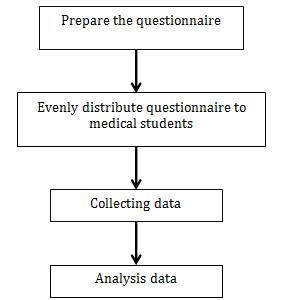
4.1
Planning of Research
4.1.1
Design of Research
This study is a descriptive study of cross sectional study. The subjects of this study are Udayana University medical students, in particular semester 5 and semester 7 students. The study will be conducted by using online survey questionnaire.
4.1.2 Place of Research
This research will be conducted at Medical Faculty of Udayana University, Denpasar, Bali.
4.1.3 Time of Research
Research will be conducted from 2016 till 2017.
4.2 Subject and Sample
4.2.1
Target Population
The target population of this study is medical students of Udayana University.
4.2.2 Accessible Population
Research will be conducted from 2016 until 2017 at Udayana University among male medical students of Udayana University.
International Journal of Healthcare Sciences ISSN 2348-5728 (Online)
Vol. 8, Issue 1, pp: (234-249), Month: April 2020 - September 2020, Available at: www.researchpublish.com
4.2.3 Criteria of Subject
The criteria of this research will be male students from semester 5 and semester 7 in Udayana University.
4.2.4
Size of Sample
The size of sample data in this research is based on the data will be collected based on the number of medical students who are volunteered to take part in this survey.
4.2.5
Method of Sample Techniques
The sampling technique used is a total sampling technique. In this technique all male students from semester 5 and semester 7 will be given the link of this survey. The students of each class in their regular schedule will fill in the questionnaire. They will answers all questions independently. The students will be assured that their identity would be declared. Before conducting the survey, inform consent will be taken from the students who participate in the survey.
4.5 Data Collecting Method and Analysis
The data will be collected from male students of semester 5 and semester 7 in Udayana University faculty of medicine. Every selected individual will be informed about the purpose of this research and will be assured about the confidentiality of information.
5. DISCUSSION
From the chapter previously, we are to determine the level of knowledge and awareness of premature ejaculation. There are three major parts of this awareness. Starting from common knowledge on premature ejaculation, diagnostic and management of premature ejaculation and lastly the health prevention on premature ejaculation. These questionnaires have been distributed to male medical students of Udayana University particularly semester 5 and semester 7 students. Below will be the pie charts on the knowledge and awareness of most male students about premature ejaculation.
Charts below shows the knowledge percentage about common knowledge on premature ejaculation.
Chart 1. Premature ejaculation term.

International Journal of Healthcare Sciences ISSN 2348-5728 (Online)
Vol. 8, Issue 1, pp: (234-249), Month: April 2020 - September 2020, Available at: www.researchpublish.com
Chart 2. Premature ejaculation the most common form of male sexual dysfunction.
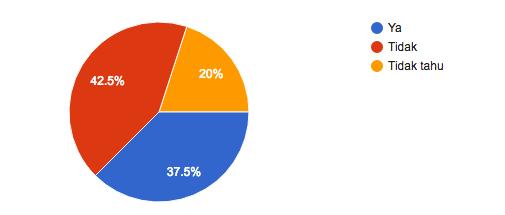
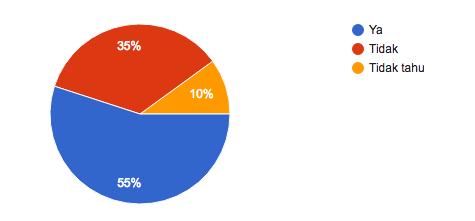
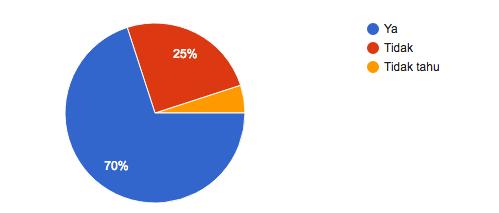
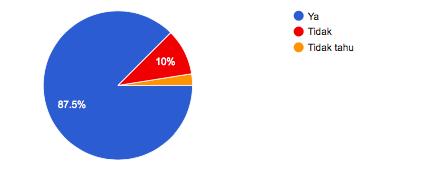
Chart 3. Psychological factors cause premature ejaculation.
Chart 4. Premature ejaculation with new partner.
Chart 5. Premature Ejaculation Diagnostic Tool (PEDT)
International Journal of Healthcare Sciences ISSN 2348-5728 (Online)
Vol. 8, Issue 1, pp: (234-249), Month: April 2020 - September 2020, Available at: www.researchpublish.com
Chart 6. Knowledge on Dapotexine
As the result shows, out of 40 respondents from this questionnaire, 97.5% said have heard the term premature ejaculation. This show most of male students have heard about this issue. Only 2.5% that haven’t heard of this term. As for the second chart shows 87.5% of the respondents know that premature ejaculation is one of male sexual dysfunction. 10% from the respondents answered no and 2.5% don’t really know. Based on International Journal of Impotence Research, there is lack of a universally acknowledged definition of PE has complicated the examination and analysis of PE in clinical and research-related setting.3
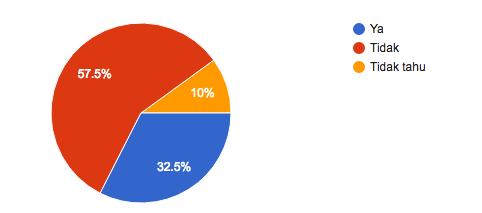
Chart 3 show 70% of respondents knows that psychological factors contribute to premature ejaculation, while 25% said no and 5% said didn’t know. This shows that the lack of exposure on factors contribution for premature ejaculation among the medical students it self. While on chart 4 shows knowledge on premature ejaculation that may happen with new partner. 55% of the respondents answer they know PE happened with new partner, while 35% said no and 10% said didn’t know. This 2 charts shows we need to educate more about the factors contributing to premature ejaculation, among medical students and men.
Chart 6 shows 37.5% said yes, PEDT help in diagnosing premature ejaculation. while 42.5% said no and 20% said didn’t know. This show the lack of acknowledgement on PEDT among men to help them diagnosing premature ejaculation. As for this result, we know that we need to give more exposure and knowledge on PEDT, at least to help them to selfdiagnose if there is a possibility of premature ejaculation among themselves. Chart 7 is about Dapoxetine, an antidepressant that help for treating premature ejaculation. 32.5% said have heard about this drug, while 57.5% said no and 10% said didn’t know. This result tell us that the lack of information among them maybe due to sensitivity issues of this problem. Most men will be ashamed or shy with this problem. Therefore the lack of knowledge on treating this problem.
6. CONCLUSION
Based on the result from this research, we should emphasize more on knowledge of premature ejaculation in men. Most of the respondents know what is premature ejaculation, but there is lack of knowledge on factors contributing to the problem and how to manage it. Most of the respondents can differentiate premature ejaculation and pre ejaculation but there is some that didn’t have a clue what it is. We need to give more classes and information to those men, either the medical student or publics as premature ejaculation is a common problem among men, and it is treatable. We need to make the public to be openly speak about their health problem as we a healthcare provider can keep it privately and confidential. We need to give more awareness program for this problem as a way to promote a healthy life style and obviously to increase the knowledge of publics and male medical students.
REFERENCES
[1] Mayo Clinic Staff Premature Ejaculation. http://www.mayoclinic.org/diseases-conditions/premature-ejaculation/ basics/definition/con-20031160. June 6, 2014
[2] T. SYMONDS , D. ROBLIN , K. HART & S. ALTHOF (2003) How Does Premature Ejaculation Impact a Man’s Life?, Journal of Sex & Marital Therapy, 29:5, 361-370, DOI: 10.1080/00926230390224738
[3] C Carson and K Gunn (2006) REVIEW Premature ejaculation: definition and prevalence, International Journal of Impotence Research (2006) 18, S5–S13. doi:10.1038/sj.ijir.3901507
International Journal of Healthcare Sciences ISSN 2348-5728 (Online) Vol. 8, Issue 1, pp: (234-249), Month: April 2020 - September 2020, Available at: www.researchpublish.com
[4] T. Symonds, M. Perelman, S. Althof, F. Giuliano, M. Martin, L. Abraham, A. Crossland, M. Morris & K. May (2007) Further Evidence of the reliability and validity of the premature ejaculation diagnostic tool, nternational Journal of Impotence Research (2007) 19, 521 – 525; doi:10.1038/sj.ijir.3901567; published online 14 June 2007
[5] Samuel G Deem, DO (2004) Premature Ejaculation. http://emedicine.medscape.com/article/435884-overview# aw2aab6b2b4 April 28, 2014
[6] R. Henry and A. Morales (2003) Topical lidocaine-prilocaine spray for the treatment of premature ejaculation: a proof of concept study, International Journal of Impotence Research (2003) 15, 277–281. doi:10.1038/ sj.ijir.3901011
[7] Insang Hwang, Dong-Ouk Yang, Kwangsung Park (2013) Self-Reported Prevalence of and Attitudes toward Premature Ejaculation in a Community-Based Study of Married Couples, World J Mens Health 2-13 April 31(1): 70-75
[8] Timothy G. Schuster (2006) Premature Ejaculation. https://www.medscape.com 2006
[9] Chris G McMahon (2012) Dapoxetine: a new option in the medical management of premature ejaculation Oct 2012; 4(5): 233-251
APPENDICES
Charts from questionnaire results.


Chart 1. Premature ejaculation term.
Chart 2. Premature ejaculation the most common form of male sexual dysfunction.
Chart 3. Psychological factors cause premature ejaculation.
Journals
International Journal of Healthcare Sciences ISSN 2348-5728 (Online)

Vol. 8, Issue 1, pp: (234-249), Month: April 2020 - September 2020, Available at: www.researchpublish.com
Chart 4. Premature ejaculation with new partner.



Chart 5. Premature Ejaculation Diagnostic Tool (PEDT)
Chart 6. Knowledge on Dapotexine
International Journal of Healthcare Sciences ISSN 2348-5728 (Online)
Vol. 8, Issue 1, pp: (234-249), Month: April 2020 - September 2020, Available at: www.researchpublish.com
Chart 7. Hormonal problem, trauma or side effect of certain medicines that lead to premature ejaculation.
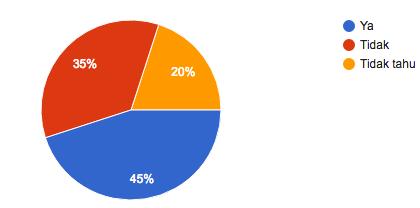
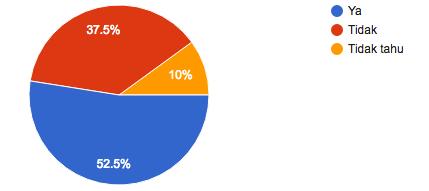
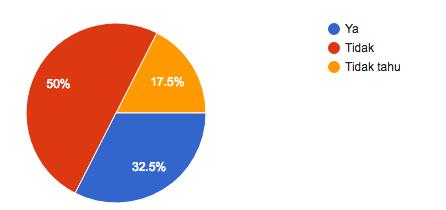
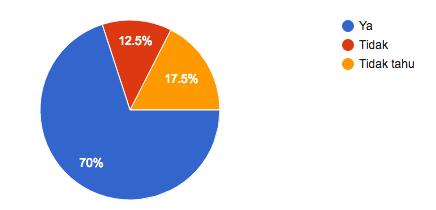
Chart 8. Classification of primary ejaculation and acquired
Chart 9. Pre ejaculation knowledge
Chart 10. Pre ejaculation is not premature ejaculation
International Journal of Healthcare Sciences ISSN 2348-5728 (Online)
Vol. 8, Issue 1, pp: (234-249), Month: April 2020 - September 2020, Available at: www.researchpublish.com
Chart 11. Pre ejaculation lead to premature ejaculation
Chart 12. Usage of PEDT or premature ejaculation
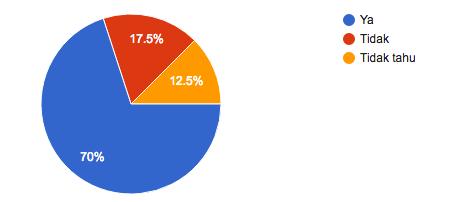
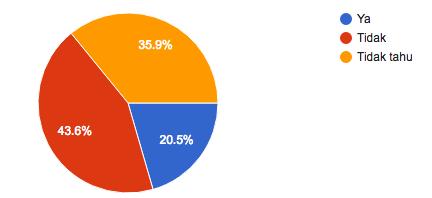
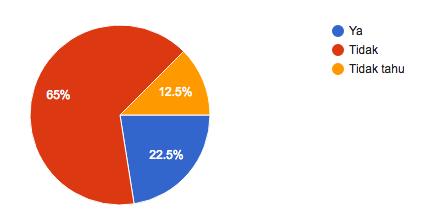
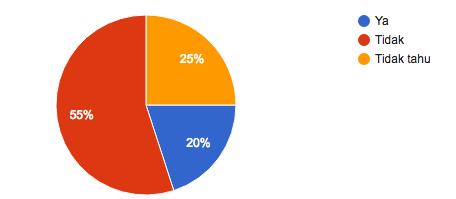
Chart 13. Premature ejaculation experience
Chart 14. Knowledge on premature ejaculation is treatable
International Journal of Healthcare Sciences ISSN 2348-5728 (Online)
Vol. 8, Issue 1, pp: (234-249), Month: April 2020 - September 2020, Available at: www.researchpublish.com
Chart 15. To seek medical help if encounter with this problem
Chart 16. Agree for counseling or behavioral therapy for this problem
Chart 17. Knowledge on pharmacologic and non-pharmacologic treatment
Chart 18. Usage of Dapotexine as treatment for premature ejaculation
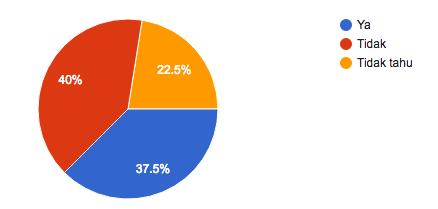
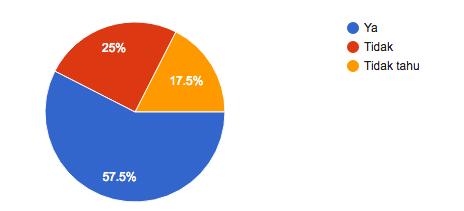

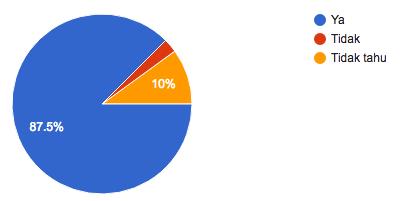
International Journal of Healthcare Sciences ISSN 2348-5728 (Online)
Vol. 8, Issue 1, pp: (234-249), Month: April 2020 - September 2020, Available at: www.researchpublish.com
Chart 19. Penis hygiene

Chart 20. Awareness on penis health, cognitive therapy and sex therapy as prevention of premature ejaculation
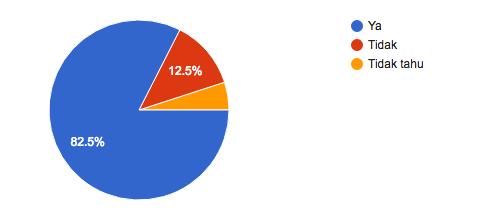
QUESTIONNAIRE
This questionnaire will be distributed to 3 parts. First part will be common knowledge on premature ejaculation, the second part will be diagnostic and management of premature ejaculation and the final part will be health prevention on premature ejaculation.
A. Common knowledge on premature ejaculation.
Question Yes No I don’t know
Have you heard a term called premature ejaculation
Did you know premature ejaculation is the most common forms of male sexual dysfunctions?
Do you know psychological factors such as anxiety, guilt or depression may cause premature ejaculation in men?
Do you know premature ejaculation may happen when you having intercourse with new partner?
Do you know hormonal problem, injury or side effect of certain medications will lead to premature ejaculation?
Can you classified primary and acquired premature ejaculation?
Have you heard about pre ejaculation?
Do you know pre ejaculation is not premature ejaculation?
Did you know pre ejaculation may lead to premature ejaculation?
International Journal of Healthcare Sciences ISSN 2348-5728 (Online)
Vol. 8, Issue 1, pp: (234-249), Month: April 2020 - September 2020, Available at: www.researchpublish.com
B. Diagnostic and management of premature ejaculation.
Question Yes No I don’t know
Did you know there is a Premature Ejaculation Diagnostic Tool (PEDT) to help diagnose this problem?
Have you tried the PEDT or any survey regarding premature ejaculation?
Do you know premature ejaculation is treatable?
Have you ever experience premature ejaculation?
Will you seek medical attention if this problem occurs to you?
Will you agree on counseling or behavioral therapy for this problem?
Do you know there are pharmacologic and non-pharmacologic therapies for premature ejaculation?
Have you heard about Dapoxetine?
Do you know Dapoxetine is an antidepressant medicine but can be used to treat premature ejaculation?
C. Health prevention on premature ejaculation.
Question Yes No I don’t know
Do you take good care of your penis health?
Did you know, penis health, cognitive therapy and sex therapy are effective ways to prevent premature ejaculation?
